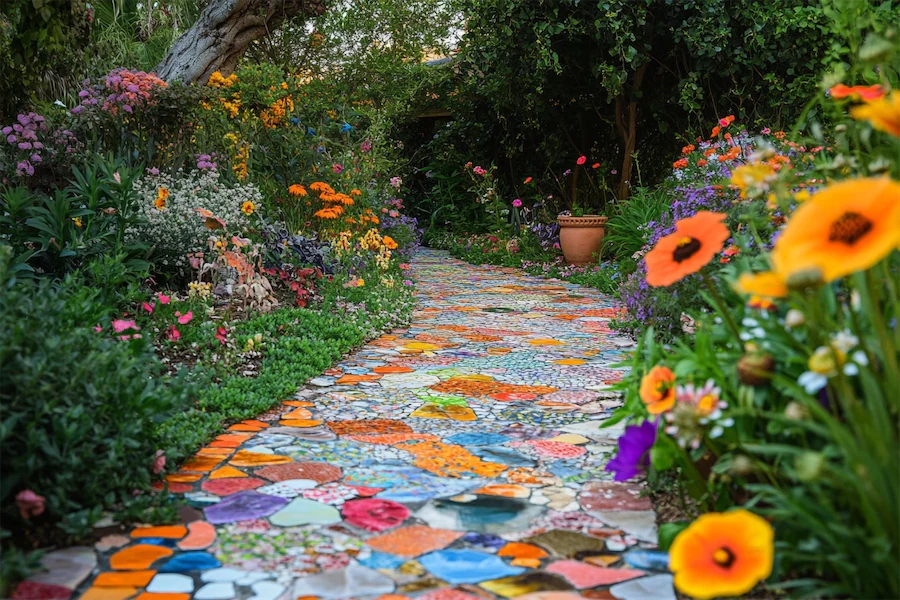A Colorful Mosaic Garden is an outdoor space adorned with vibrant mosaic art, incorporating intricate patterns and designs made from materials like tiles, glass, stones, or pebbles. This artistic approach not only enhances the visual appeal of the garden but also reflects personal creativity and style.
History and Origins of Mosaic Gardens
The art of mosaics dates back to ancient civilizations, including Mesopotamia and Greece, where pebble mosaics were used to decorate floors and pathways. Over time, this art form evolved, and today, mosaic gardens have become a popular way to infuse color and artistry into outdoor spaces.
Key Features of Colorful Mosaic Gardens
- Mosaic Pathways: Creating walkways with colorful mosaic designs adds character and guides visitors through the garden. Materials such as broken tiles, glass pieces, or pebbles can be arranged in various patterns to achieve the desired effect.
- Decorative Planters: Enhancing flower pots with mosaic art brings a splash of color and uniqueness to plant displays. This can be achieved by adhering mosaic pieces to the surface of the pots, creating intricate designs that complement the garden’s theme.
- Garden Furniture and Accents: Incorporating mosaic designs into benches, tables, or stepping stones adds functional art to the garden, making each piece a focal point. These elements not only serve practical purposes but also contribute to the overall aesthetic of the space.
Applications of Colorful Mosaic Gardens
- Personal Expression: Mosaic gardens offer a canvas for individuals to express their creativity, allowing for personalized designs that reflect personal tastes and stories. The process of creating mosaic art can be therapeutic and fulfilling, resulting in a unique garden space.
- Community Projects: Collaborative mosaic projects can beautify public spaces, fostering community engagement and pride. Such initiatives can transform communal areas into vibrant, welcoming environments.
- Sustainable Practices: Utilizing recycled materials like broken ceramics or glass in mosaic art promotes sustainability by repurposing items that might otherwise be discarded. This eco-friendly approach adds an element of environmental consciousness to the garden.
Considerations When Designing a Colorful Mosaic Garden
- Material Selection: Choose durable, weather-resistant materials to ensure longevity, especially in outdoor settings exposed to the elements. Materials like glazed tiles or treated glass are suitable choices.
- Design Planning: Sketching designs beforehand helps in visualizing the final outcome and ensures a cohesive theme throughout the garden. Planning also aids in determining the quantity of materials needed and the time required for completion.
- Safety Measures: Ensure that mosaic surfaces are smooth and securely attached to prevent injuries, particularly on walkways or seating areas. Proper sealing of the mosaic pieces can also protect them from damage and wear.
Conclusion
A Colorful Mosaic Garden transforms ordinary outdoor spaces into vibrant, artistic retreats. By thoughtfully integrating mosaic art into various garden elements, one can create a personalized haven that delights the senses and showcases individual creativity. Whether through intricate pathways, decorative planters, or embellished furniture, the possibilities are as limitless as the imagination.
